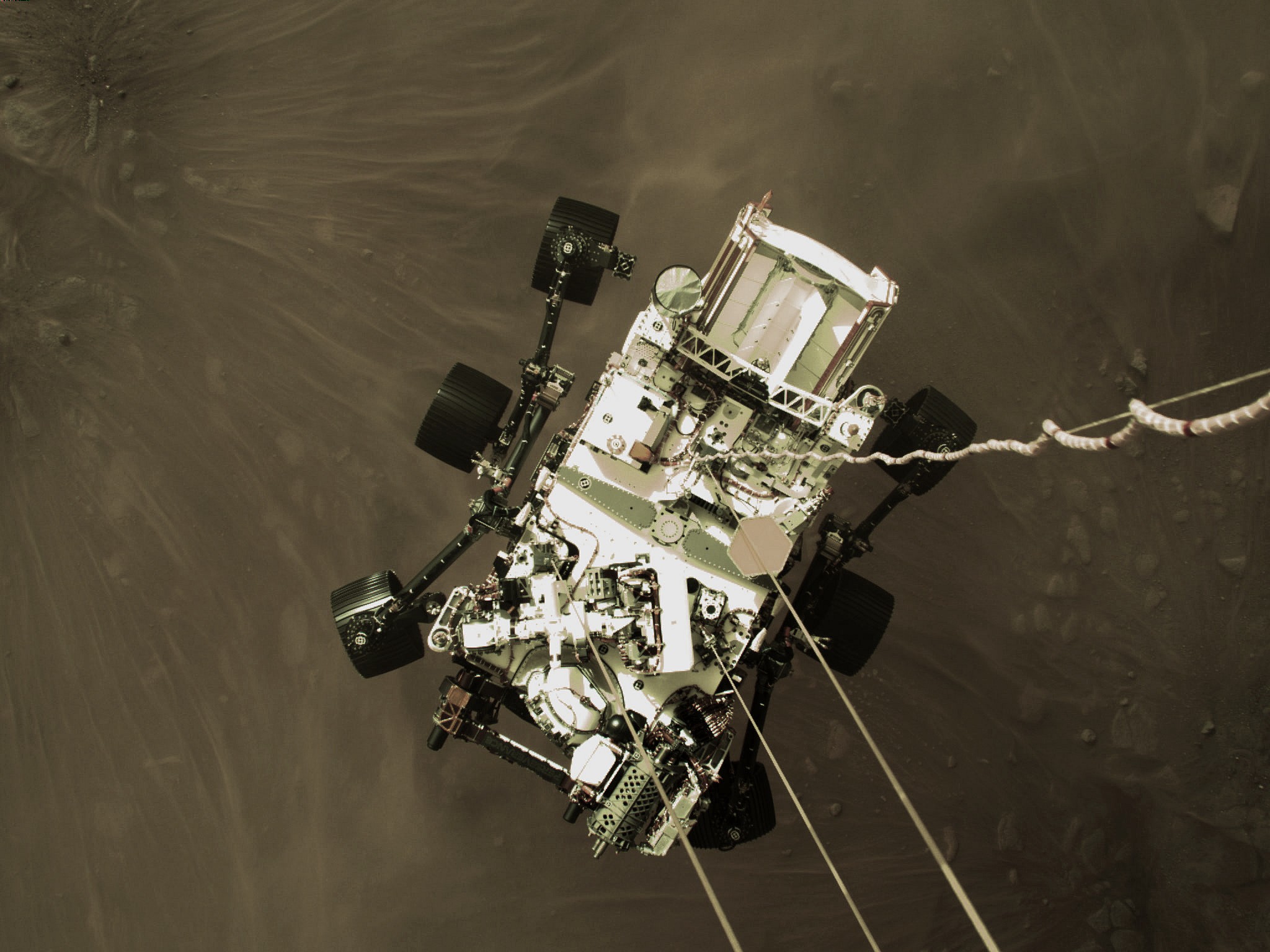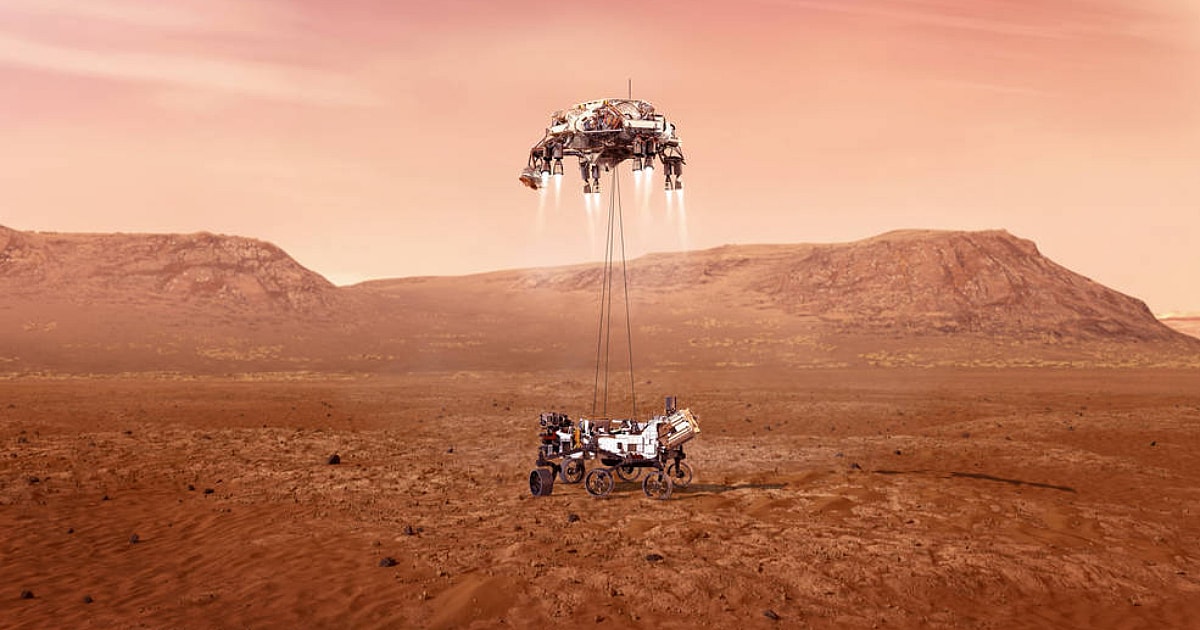NASA Releases Stunning Footage of Perseverance Rover’s Mars Landing
“Seven minutes of terror” for a lifetime’s worth of scientific discovery.
No humans have set foot on Mars yet, but we’re getting very good at landing our spacecraft there and taking loads of video (and audio) like a hyper tourist. The latest NASA Mars Rover, Perseverance, landed on the Red Planet on February 18, 2021, and it is already sending back media that promises the clearest look humanity has ever had at the surface of our mysterious neighbor—and eerily, for the first time ever, we have an idea of what Mars sounds like.

Below are audio samples recorded by ultra-sensitive microphones on Perseverance. This is the sound of loneliness.
” tml-embed-width=”100%” tml-embed-height=”300″ tml-render-layout=”inline
On first listen it’s easy to just think we’re hearing the hum of the lander at work, but subsequent, more filtered clips reveal the sound of the wind on Mars.
The landing was an unqualified success for NASA at a time when the space agency needed a win, as changes in government always bring about unpredictable changes in agencies like NASA as politicians try to evaluate its benefits to society.

In a press release published Monday, NASA fleshed out the story of the extremely dicey landing that Perseverance pulled off without a hitch:
“This video of Perseverance’s descent is the closest you can get to landing on Mars without putting on a pressure suit,” said Thomas Zurbuchen, NASA associate administrator for science. “It should become mandatory viewing for young women and men who not only want to explore other worlds and build the spacecraft that will take them there, but also want to be part of the diverse teams achieving all the audacious goals in our future.
”The world’s most intimate view of a Mars landing begins about 230 seconds after the spacecraft entered the Red Planet’s upper atmosphere at 12,500 mph (20,100 kph). The video opens in black, with the camera lens still covered within the parachute compartment. Within less than a second, the spacecraft’s parachute deploys and transforms from a compressed 18-by-26 inch (46-by-66 centimeter) cylinder of nylon, Technora, and Kevlar into a fully inflated 70.5-foot-wide (21.5-meter-wide) canopy – the largest ever sent to Mars. The tens of thousands of pounds of force that the parachute generates in such a short period stresses both the parachute and the vehicle.
“Now we finally have a front-row view to what we call ‘the seven minutes of terror’ while landing on Mars,” said Michael Watkins, director of NASA’s Jet Propulsion Laboratory in Southern California, which manages the mission for the agency. “From the explosive opening of the parachute to the landing rockets’ plume sending dust and debris flying at touchdown, it’s absolutely awe-inspiring.”
Landing on the Red Planet is not for the weak-hearted, seems to be the gist of what NASA officials are saying here—but once you get there it’s worth the trouble.
Perseverance was launched in July 2020. Its deceptively simple-sounding mission is, in the words of NASA, to “seek signs of ancient life and collect rock and soil samples for possible return to Earth.”
In addition to recording the sounds of Mars, Perseverance is also uniquely equipped with an experimental helicopter-style drone, Ingenuity, which will test its usefulness in the atmosphere there, which is 100 times thinner than the Earth’s and has much less oxygen.
Perseverance’s mission is supposed to last a Martian year, or 687 days on Earth. By the time it runs out of power or has a critical mechanical failure we’ll probably have a much better idea as to how astronauts might handle exploring Mars, what they will see there, and what they might hear.
Elon Musk stated in 2020 that he wants a million people on Mars by 2050. He’s probably got scientists on his SpaceX payroll today who are studying every new bit of info Perseverance sends back to Earth. Anyone who thinks a new life on Mars by the time the 50s roll around sounds awesome can follow the rover’s quest here: NASA.gov/perseverance.
